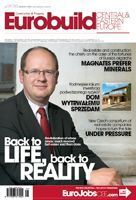Apologies for the cliché – but yes, we can. As developers and city officials are getting closer to finding a common language, there is a chance that a large number of post-industrial sites will be brought back to life across Central and Eastern EuropeMladen PetrovYou can hear many similar stories these days. Here is the Czech version. At the end of the 19th century Vysočany became one of the centres of industrial and technical development in the Czech Republic – truly the pride of Czech industry, the home of factories such as Emil Kolben’s ‘Kolbenka’. And this is how things remained until the end of the last century. As the boundaries of Prague kept on sprawling outwards, the 250-ha plot was getting closer and closer to the city centre. Meanwhile, something in Vysočany had changed for good. It was only few years ago when it was finally decided that its industrial past was exactly that – its past. So what comes next? The






























































